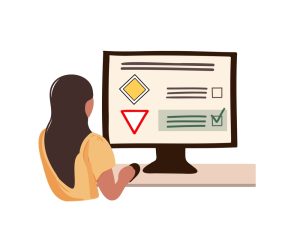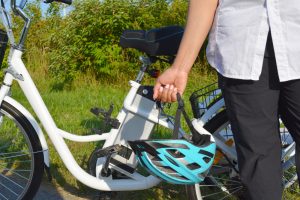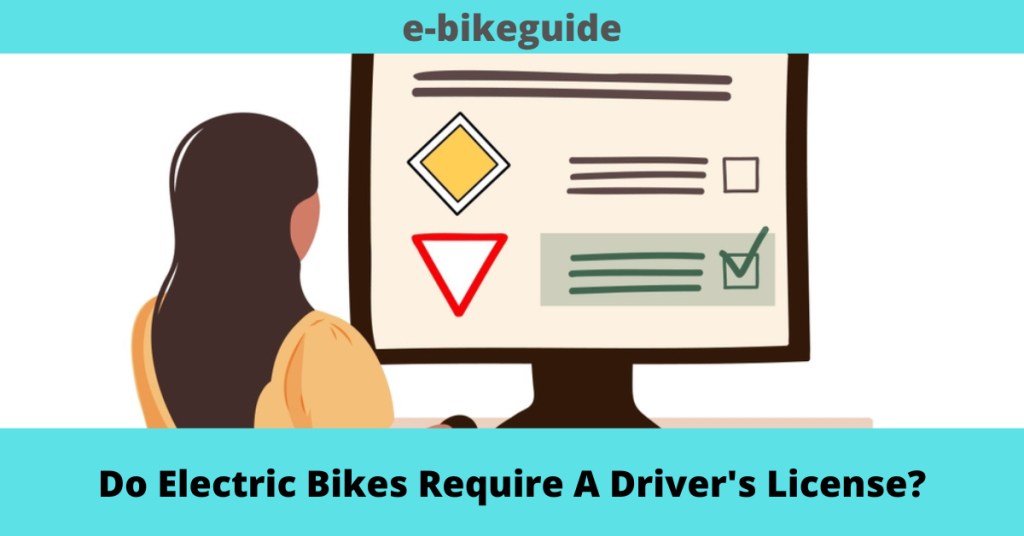
From the young to the older, all ride electric bikes. It has become everyone’s craze, with its amazing features and modes. As demand for electric bikes increases, new electric bikes with new features are introduced to the market. It led to many different types of electric bikes.
Countries and states where electric bikes are in use are trying to define electric bikes. Some States and countries give their definition; some do not have any definition at all, while others are defined based on bike classes. Defining electric bikes based on the classes of bikes is the definition many states and countries use. These classes of bikes are specified based on maximum speed and motor wattage. It determines where an electric bike can ride.
Class 1 and 2 electric bikes are classified as traditional bicycles, and they are allowed in the bicycle lanes and wherever traditional bikes are allowed. It is due to their speed limit of 20mph. The rider need not have a license to ride class 1 and2 bikes.
Class 3 electric bikes normally are not allowed to ride in the bicycle lanes due to their speed limit of 28mph. Class 3 electric bikes can use on the road mostly in many states and countries. Class 3 electric bikes are classified as motorcycles, so the rider has to hold a driving license to ride them.
State and country laws differ; therefore, you should check your area’s legal laws on the electric bike before you ride.
Classes of electric bikes and the common laws.

All three electric bike classes have a motor, controller, battery, and pedals. What differentiates them is the speed limits and the motor wattage. Due to those differences, the legal laws on them vary too.
-
Class 1 electric bike

Class 1 electric bikes are pedal assist only. It starts functioning when the rider puts effort into pedaling. It does not have a throttle; therefore, to propel the bike, the rider has to put his efforts into pedaling. The maximum speed these bikes allow is 20mph, and the bike automatically shuts down with that speed.
Class 1 electric bikes are more or less traditional bikes with only pedal assistance to differentiate them. These bikes are, therefore, least likely to be restricted. And they can use the bicycle lanes and ride wherever the traditional bikes can ride.
Though they resemble traditional bikes, they can climb steep hills and ride on rough terrains with the assistance of a pedal assist feature. These bikes also come with LCD and a headlamp. You can commute with the class 1 electric bike sweat-free, and less energy spent, and arrive at work refreshing.
It can replace your old traditional bike and give you a better service. Class 1 electric bikes are a better physical trainer and give you a better result. With pedal assist, you can choose the level of support you want in your training session and cycle for more time than before. You will get into better shape in less time, increasing your muscle tone, flexibility, strength, and stamina.
Class 1 electric bikes are the best choice for people who wants to start their physical training and get back to shape. Without straining your muscle on your first day, you can start by getting more pedal assistance and gradually increase your effort in pedaling.
As these are typically traditional bicycles, they do not require registering. The rider needs not have a license to ride on them, and no age restriction. Therefore even children ate encouraged to ride the electric bike. As there is no need for registration and license, insuring your class 1 electric bike is not mandatory. However, you can insure it as it is expensive and the chances of stealing it are high. Concerning the public’s safety, some states and countries demand the rider and the passenger to wear a helmet if they are under 17 (age can vary depending on the state or country ).
-
Class 2 electric bikes

Class 2 electric bikes have pedal assistance and throttle. A rider can use the pedal assist or the throttle to propel the bike. He can even use both to control the power delivery of the bike.
The maximum speed a rider could ride with a class 2 electric bike is limited to 20mph. Like a class 1 electric bike, it will stop right after it reaches that limit.
Due to the low-speed limit, Class 2 electric bikes can use bicycle lanes, and just like class 1 electric bikes, they can use any roads the traditional and class 1 electric bikes use.
Mostly all types of bikes encompass class 2 electric bikes, from mountain bikes to traditional bikes with a throttle. You can use the throttle to ride an electric bike to cover more places with less energy.
Climbing steep paths in class 2 electric bikes requires less effort than in class 1 electric bikes—a better commute with a sweat-free ride.
can use the bicycle mode for physical training, with levels of pedal assist. And pedal-free rides back home, using the only throttle.
Class 2 electric bikes will be a great choice for people with a particular ailment that does not allow them to ride a traditional bicycle. Also, it can work great for people starting physical training.
Due to its speed limit of 20mph, Class 2 electric bikes can share the roads and paths with traditional bicycles and Class 1 electric bikes. As it is also classified as a traditional bike, you do not need to register it. The rider need not have a license to ride them. Therefore, insurance is not compulsory on class 2 electric bikes. Though you have the choice to insure it as it is costly, and due to its lightweight nature and can ride it without a key, the chances of stealing your class 2 electric bikes are high.
In most states and countries, there is no age restriction, and anyone can ride, but within the age limit, throttle use might vary. But wearing a helmet is strictly obligatory for all riders and passengers below the age of 17 (the age might differ from state to state and country to country). It is a safety precaution, and we recommend you wear one when riding your class 2 electric bike.
-
Class 3 electric bikes

Class 3 electric bikes are powered up to the speed limit of 28mph. They have pedals but can be with or without throttle. Having a speedometer on the bike is a must.
Due to its high-speed limit, Class 3 electric bikes can not use bicycle lanes or roads that allow only traditional bikes to ride. Mostly, roads allow class 3 electric bikes to ride.
The rules and legal laws on class 3 electric bikes can be confusing. Check the local legal laws before you take your bike outdoors. Laws in each state and country vary; even within cities, they vary. Therefore, know the rules before you take class 3 electric bikes outside the city.
Class 3 electric bikes are for people who love speed and fast riding. It is the most powerful
among all three electric bike classes, and its speed copes with the traffic.
Class 3 electric bikes are fast commutes. It lets you cover a long distance in a shorter time.
The class 3 electric bikes are with and without throttle. According to the legal laws in each state and country, some do not allow class 3 electric bikes with the throttle on roads. Other area or region allows it. It is due to the speed and safety of pedestrians and other motorists.
A rider can get up to 28mph by pedaling or throttle, and it will shut down after that.
By locking the speed limits to 20mph, bikers take the class 3 electric bikes through the bicycle lanes and all places where the traditional bikes are used.
Those bikes need to be registered in states and countries or areas where class 3 electric bikes are allowed on the road. The rider has to own a driving license to ride it. Therefore insurance is compulsory.
The rider has to be at least 16 (age differs depending on the state or the country) to ride class 3 electric bikes. To ensure the safety of the rider and the passenger, everyone must wear a helmet, regardless of age.
These are the classes of electric bikes that are legally classified. It determines where the rider can ride the bike. They also have varying road rules; knowing them is a must as you won’t have to face legal issues. It can also avoid many accidents.
What about Class 4 electric bikes?

There are only three classes of electric bikes that are legally classified in all states and countries. People refer to the bikes that surpass the speed limit of 28mph as class 4 electric bikes. However, these bikes fall under the category of moped or motorbike, with pedal assistance or throttle.
These bikes should follow the same rules as mopeds and motorcycles by registering the bike and getting an insurance policy. The riders should own a driving license to ride these bikes. And depending on the state or country, there is an age restriction on who can ride them. Wearing a helmet is obligatory.
These bikes cannot use bicycle lanes; only traditional bikes are allowed anywhere. Depending on the state and the country, these bike road laws differ. Some states allow it to use the roads with other automobiles, while in done places, they strictly prohibit using the road. Mostly, these bikes are known as off-road bikes, as they are only allowed to ride outside the legal pathways away from other motorists and slow traditional bicycles.
The motor used in these bikes is 750W or higher. Therefore, it gives more power to ride the bikes faster. A rider can use the throttle to commute faster and easier. Though these bikes are classified as motor vehicles, they are less expensive than cars and motorcycles, which is a gain for the rider. As throttle help you attain the higher speed, the rider should not have to give his effort in pedaling to reach more speed like in class 3 electric bikes.
Electric bikes do not need fueling; therefore, you can save much on the gas fee. Unlike other motor vehicles, it gets its energy from electricity. And it does not take too long to charge either. Replacing parts are not as expensive as other motor vehicles.
Owning an electric bike that’s informally known as a class 4 electric bike is a less expensive and better advantage. But before purchasing, know the rules of your state or country, as it might not allow it on the roads.
Can electric bikes surpass their speed limit?

Each class of electric bike has a speed limit that is allowed by the state or the country. The manufacturers build these bikes with a speed limit that automatically stops at that as it gains that speed. But there are electronics you can toggle to unlock more speeds.
Though manufacturers limit the speed by the legal speed limit, they design the bikes with more potential speed. It is not possible in all electric bikes, but you can toggle to get more speed on some bikes. Many bikes can surpass the speed limit of 28mph but have locked it to follow the road rules.
If you want to try their speed, you can use private property and unlock the speed limit through the LCD on the handlebars. Many bikes only exceed a little more than their speed limit, but few can exceed a lot more.
By unlocking their speed limit, these bikes are restricted from riding on bicycle lanes and roads. But you can try them off-road or on private property. Though you can try it off roads, it can be dangerous when tried on normal roads.
Conclusion

Electric bikes are of many types, and due to this, they are classed into classes based on the speed and where they can ride. Class 1 are electric bikes with only pedal assist, and you can ride up to 20mph on these bikes. These bikes can share bicycle lanes and roads with traditional bicycles.
Class 2 electric bikes are the same as class 1electric bikes with the throttle. You can use pedal-assist or throttle to propel the bike forward or both of them. As the speed limit is the same as the class 1 electric bikes, they can also share the bicycle lanes and the paths shared by traditional and Class 1 electric bikes.
Class three electric bikes are pedal-assisting electric bikes with or without throttle. The maximum speed limit is 28mph. As they have a higher speed limit, they cannot share the traditional bike paths or lanes but can share the road with other motor vehicles.
Legal road laws vary from state to state to country, depending on the classes of electric bikes. Class 1 and 2 electric bikes mostly share the same laws. They need not register their bikes, and the rider does not need a driving license to ride them. Therefore the bike doesn’t need insurance, but you can insure it if you wish, as they are expensive. It has no age restrictions, and therefore even children can ride them. But the helmet is mandatory for all below the age of 17 or the age that state the country declares.
Class 3 electric bikes have to register, and the rider needs a driving license to ride the bike. Therefore, insurance is compulsory. Depending on the state and country’s law, age restrictions can vary, and mostly, the rider has to be at least 16 to ride a class 3 electric bike. A helmet is compulsory for every rider and passenger, regardless of age. Sometimes they restrict these bikes from sharing the motorway with the throttle. Therefore you can only use pedals on many motorways.
Some bikes exceed the speed limit of 28mph, and these bikes usually come under the category of mopeds or motorcycles. They must get registered and require insurance and a license from the rider to ride them. A helmet is compulsory for all riders and passengers. Sometimes they outlaw these bikes from riding on roads by the country’s or state’s law. Therefore they probably have to ride off-road.
